#moldavian art
Photo
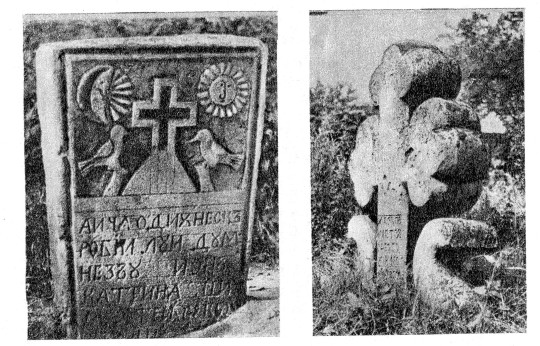


Rîșcani cemetery headstones, first half of XIX century. Khishinev, Moldavia. По Молдавии, 1975
465 notes
·
View notes
Text
J.R.R. Tolkien - The Hobbit (Moldavian SSR, USSR, 1987)
artist: Igor Khmelnitsky



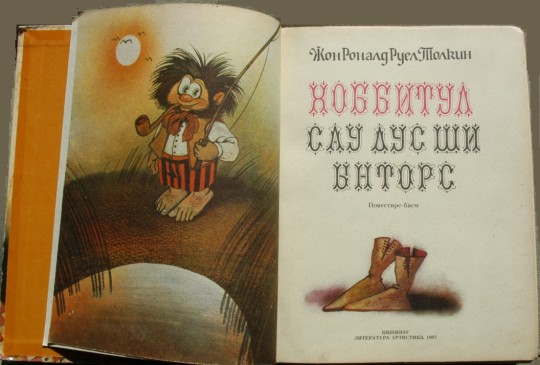


#sff#fantasy art#fantasy#the hobbit#tolkien#ussr#moldova#moldavian ssr#80s#book covers#illustration#igor khmelnitsky
85 notes
·
View notes
Text
youtube
I love Eurovision season because I always learn things.
This year, it's Moldovan-Romanian folklore.
Moldova's entry, Soarele și Luna, is heavily influenced by Miorița, a poem/ballad/pillar of Romanian-old Moldavian folklore that goes back to the 1700s in its written form but probably goes back earlier.
Balada Miorița tells the story of three shepherds: a Moldovan, and a Wallachian and a Transylvanian who, jealous of the Moldovan, conspire to kill him.
The Moldovan's prized sheep Miorița (lit. little ewe), warns him - but the shepherd doesn't plan to fight back or escape. (Presumably bc shepherding in the Carpathians traditionally involved transhumance and living outdoors for months so... where's he gonna go?)
Instead, the shepherd asks Miorița to hide his death from the other sheep - and from his family - and to tell them instead that he went into the forest to marry a princess, with the sun, moon, and mountains standing as witnesses:
Soarele şi luna / Mi-au ţinut cununa. [...] Preoţi, munţii mari.
The Sun and Moon came down / to hold my wedding crown [...] The priests were the mountains high
(note: I'm working from some really sketchy translations; very open to better resources pls.)
Anyway, the description of the wedding is not only beautiful, but a fantastic allegory for the shepherd accepting death, laying down with his fate and embracing it instead of showing fear. Reclaiming agency to protect the people he loves (and redefine his own memory) in the face of an existential threat.
Wildly out of my depth at the point I'm reading about the role the story - and particularly the symbolism/iconography of the lone shepherd - played in Romanian independence, but I'm pretty sure it was a thing. Likewise, the choice of this material as a starting point for Moldova's ESC entry is very interesting to me.
Moldova's 2022 offering, Trenuleţul, used a train as an allegory for a pro-unification message (for.. obvious geopolitical reasons, in addition to the strong pan-Balkan cultural ones detailed in the song):
Pleacă trenul! Unde eşti?
Chişinău – București.
The train's route is East to West
Chisinau to Bucharest!
Idk if I'm now overthinking it too much (I got excited and I thought it was neat, okay?) but I just feel like the cultural overlap, the defiance and the energy of Pasha Parfeni's performance carries more symbolism than the entry is getting credit for. Unsurprising, given this is also the year of Croatian art rock political commentary via drag generalissimos and tractor-based analogies, but still.
Either way, I learned something new and found a new thing to read, and I thought it was beautiful. And that made me want to share. So... enjoy?
Iar tu de omor
Să nu le spui lor.
Să le spui curat
Că m-am însurat
Cu-o mândră crăiasă,
A lumii mireasă;
Că la nunta mea
A căzut o stea;
Soarele şi luna
Mi-au ţinut cununa.
Brazi şi paltinaşi
I-am avut nuntaşi,
Preoţi, munţii mari,
Of how I met my death,
Tell them not a breath;
Say I could not tarry,
I have gone to marry
A princess – my bride
Is the whole world’s pride.
At my wedding, tell
How a bright star fell,
Sun and moon came down
To hold my bridal crown,
Firs and maple trees
Were my guests; my priests
Were the mountains high;
(x) (x)
#esc 2023#soarele si luna#pasha parfeni#foklore#help i overthought and i can't get up#video#music#ngl i got into it bc pasha looks like every guy i've ever been to a green fair with or bought artisanal incense from#and it all got out of control from there#now i'm writing eurovision meta and having feelings about pastoral poetry#there's a bit where he asks his bone flute be placed in his grave to play when the wind blows across it#so the sheep will gather above where he rests#i think that's a classical allusion? but i have to go do productive things for a change so i won't have time to look into it#soarele si luna does have a killer flute break though#just saying
34 notes
·
View notes
Note
Will you tell me about your hellsing OC?
Before I begin: (I'll give a basic but vague rundown of my oc in the form of a letter sent from him to one of his Welsh cousins. The reason why I'm doing this is because the story is complicated and I'd rather give a vague look into the world of my fic and oc to make the reader question what the world is about but still tell a story. Also my commissioned art for my oc is not yet complete.)
___________________________________________
(This letter was approved by censors and sent through secure communication line 1-3 via telegraph)
Reason: Informal Communique between commanders of Varangian Guard.
Sender: Sigurðr Magnusson, leader of the Varangian Guard's 1st Expeditionary Force.
Letter Date: January 7th, 1996
Dear Anaraut,
It's your cousin, Sigurd. I've written to you to tell you that I'm in the town of Iaşi and wanted inform you that I'm in dire straights because I heard that you, your brother, and other cousins are going back to Wales and England to secure some areas seeing vampire attacks. I, unfortunately will not be able to go with you because I'm going to lead an offensive into Moldavia and South Western Ukraine with 39,000 soldiers and several armored battalions along with a few divisions acting as reserves to our advance for support into the Moldavian capital of Chișinău and from their we'll consolidate other forces and local armies to turn the tide further in our favor.
There's not much resistance to be expected from what my scouts have told me about the general area, and my lesser officers have reported a few clusters of medium sized skirmishes in the north east and directly east. I don't know why they're leaving the rivers open to Harald Hardrada's fleet to just raid into Russia but it may be a trap for all we know.
I've heard rumors though. Rumors that the hordes of lab created vampires, among with other monsters, are heading towards Kyiv, pushing past several divisions and nearly facing the widest point of the southern Dnieper river. If they push past Kyiv and head towards Chernobyl it will lead to dire consequences for the whole world.
We cannot let this happen. The army that I lead knows this as well and are more than prepared to blitz into Ukraine's border and rocket towards Kyiv without a single hesitation and leave the cleanup to the local forces and reserves.
To be honest with you, I'm scared, angry, and willing to die to stop this from happening. In the name of Thor I will protect humanity and stop this tragedy from unfolding with my dying breath if I must. My soldiers are also willing to throw their lives away to protect humanity with the same enraged and desperate fervor as well. We won't let these bastards cause more mothers to weep for lost children, we won't let them take our brothers away, we won't let them take children's parents, we won't let these monsters reek such destruction onto this planet anymore. Wish me luck, and if it is ever to be that I die, then I hope to see you in Valhöll. If you are ever carried to the hall of Oðinn's chosen warriors by the Valkeries, you may find me there.
Wish me luck, Anaraut.
Your cousin,
Sigurðr
I hope this somewhat works @rotten-hearts-sharp-teeth
#I hope this works to give some insight into the character before I release a post telling all about Sigurd#answer#hellsing#hellsing oc
6 notes
·
View notes
Text
Flag Of Moldova

Similarly as other various nations, the state of the art Flag of Moldova following the fall of the Soviet Affiliation. The exclusion for that standard is the flag of Romania, which earnestly seems to be that of Moldova as a result of the inheritance and obsolete joins that the two nations share. The nation lost its political autonomy around the completion of that period, which held it back from having its own special flag until the presentation of the Moldavian Ubiquity based Republic.
https://www.xaphyr.com/blogs/200980/Flag-Of-Moldova
1 note
·
View note
Photo

'Life cycle' by Moldavian Izzy Izvne (@izzyizvne) for Street Art Fest 2022 in Grenoble, France #izzyizvne #safg2022 #grenoblestreetart #streetart #lamolinastreetart 📷 by @andreaberlesephotography via artist bit.ly/3u4Omss (bij Grenoble, France) https://www.instagram.com/p/CfTjyu9rslx/?igshid=NGJjMDIxMWI=
1 note
·
View note
Photo
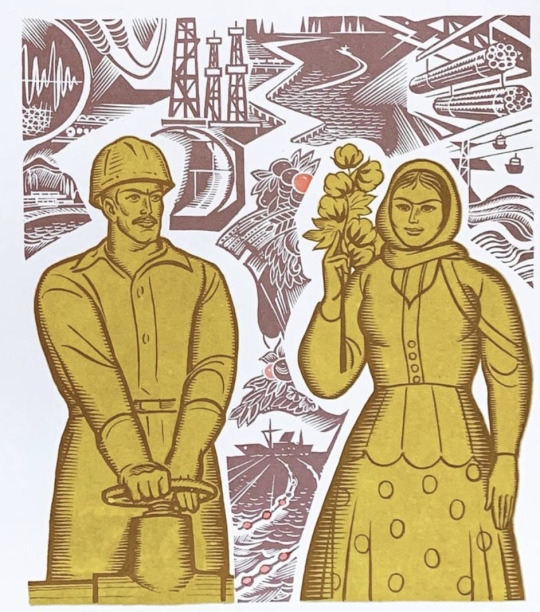




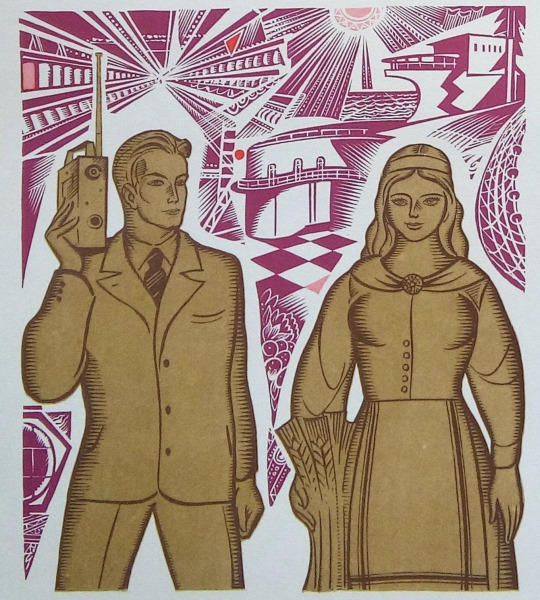
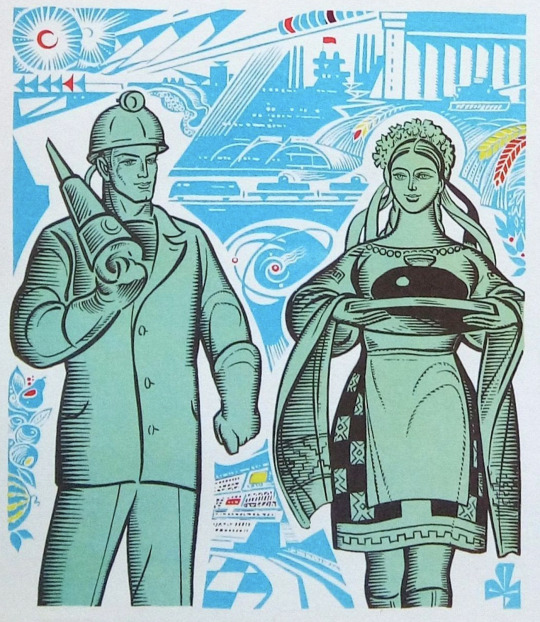
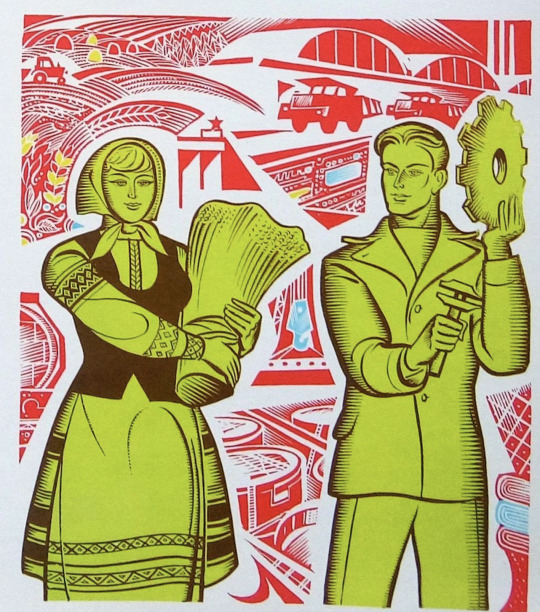


Personifications of Soviet Socialist Republics (via GrandpaWorkshop on Etsy)
From L to R, top to bottom: Azerbaijani SSR, Georgian SSR, Estonian SSR, Turkmen SSR, Kirghiz SSR, Latvian SSR, Ukrainian SSR, Byelorussian SSR, Lithuanian SSR, Moldavian SSR, Tajik SSR, and Armenian SSR
#ussr#soviet art#ukrainian ssr#moldavian ssr#romanisme#bssr#azerbaijani ssr#essr#turkmen ssr#georgian ssr#kyrgyz ssr#latvian ssr#armenian ssr#tajik ssr
327 notes
·
View notes
Text
The Side Look of a Barcelonese #1 495 : Зазеркалье…(Through the Looking Glass…) © Tanya Luca :
The Side Look of a Barcelonese #1 495 : Зазеркалье…(Through the Looking Glass…) © Tanya Luca :
#tanya luca#the side look of a barcelonese#choice of the day of the mag#choice of the day of YWAMag#art#emotions#reflections#self portraits#moldavian photographers#contemporary art#masters on tumblr#abstract#trees#nature#visual poetry#landscapes#composition#gifts#magic#visual art#arte contemporáneo#b y n
5 notes
·
View notes
Photo

☀️Tales of Moldova☀️Published by @lightworkmagazine Summer/August Vol. 1, Issue 2. About the Moldavian Tales: This photo-narrative street photography series aims to piece together the puzzle of the Moldavian identity and culture. From its Soviet Union symbols and history, to its flirty adaptation to the western civilisation, there is an unsolved enigma about this country. Considered by some the poorest in Europe and with the lowest human development index, the decision to be one of the 20 thousand foreign tourists that visit this little eastern nation was dubious for me. However, from the traveller and photographer perspective, the charm was in the uniqueness of its patchy urban and rural landscapes, and the important religious and military presence. In this two weeks photo-trip throughout Moldova I explored: Chisinau, Milestii Mici Winery, Valea Morilor, Saharna Monastery, Tipova Monastery, Orheiul Vechi, Trebujeni-Butuceni Monastery, Cricova Winery, Capriana Monastery, Curchi Monastery, Transnistria (Bender y Tiraspol), Gaugazia, Congaz, Comrat, Belsama, Taraclia, Svetlii, Soroca, Japca Monastery, Balti, Padurea Domneasca National Park and Asconi Winery. The images show the picturesque intricacy of Moldova, looking for its own position between the old and the new, and at the same time combining the respect to the roots and the slow pace movement towards capitalism. Its beauty doesn’t rely on artificiality to embellish the experience, it’s just authentic local magnetism. #moldova #moldavian #moldavo #instagram #streetphotography #streetphotographer #calle #street #streetphoto #fotografiadecalle #lightworkmagazine #mag #magazine #art #moldavia (en Moldova) https://www.instagram.com/p/CDexhrnITyt/?igshid=3d7rmx9t5ov6
#moldova#moldavian#moldavo#instagram#streetphotography#streetphotographer#calle#street#streetphoto#fotografiadecalle#lightworkmagazine#mag#magazine#art#moldavia
0 notes
Photo

juices of a carved pomegranate soaking through a piece of white linen...
Sergei Parajanov’s The Colour of Pomegranates is a poetic biography of the eponymous 18th-century Armenian minstrel and bard, Sayat Nova, the “King of Songs”, recounting the stages of his life as writer, lover and priest.
Bold in its avant-garde imagery, mesmerizing in its patience; at only 77 minutes it is well and truly an epic. A film about poetry that is in and of itself poetic.
The film opens with a male voice proclaiming “I am he whose life and soul are torment” from a Sayat Nova poem. In his 2013 book, The Cinema of Sergei Parajanov, James Steffen states: “Much of the film’s thematic richness and emotional resonance derive from its dual vision as a film about [the poet] and as a coded autobiography of [Parajanov].”
_________________________________________________
Born Sarkis Yossifovich Paradjanian of Armenian parents on 9 January 1924 in Tbilisi, Georgia, Sergei Parajanov transferred from the Tbilisi Institute for Railway Engineering (1942) to study song and violin at the Tbilisi Conservatory of Music (1943-45) before gaining admission to VGIK, the Soviet All-Union State School for Film Art and Cinematography (aka Moscow Film School) in 1946. He graduated as a film director in 1951 under the tutelage of Ukrainian directors Igor Savchenko and Alexander Dovzhenko and found employment at the Kiev Film Studios (later renamed the Alexander Dovzhenko Studios).
Parajanov began his career by making the same film twice and with the same co-director, Yakov Brazelian. Shortly after completing their diploma film, Moldavian Fairy Tale (1951), shot in the Ukraine, he assisted his mentor Igor Savchenko on Taras Shevchenko (1951) and then remade with Brazelian their graduation short as a feature-length children's film titled Andriesh (1955). Moldavian Fairy Tale appears to be lost, although Parajanov claimed to have kept a copy at his home in Tbilisi. Three documentary films followed: Ballad(1957), about a choral group and made for the anniversary of the 1917 Revolution; Golden Hands (1958), about folk art and co-directed with two other documentary filmmakers; and Natalya Ushviy (1959), a portrait of a prominent Ukrainian stage and screen actress. All three documentaries can be found in the Kiev archive. His next three feature films at the Dovzhenko Studios -- The First Lad (1959), Ukrainian Rhapsody(1961), and The Flower on the Stone (1962) -- generally followed the prescribed principles of Socialist Realism, yet each did contain scenes that went against its grain.
Parajanov's ninth film in Kiev, Shadows of Our Forgotten Ancestors (1964), caused an uproar by smashing to bits the principles of Socialist Realism in Soviet cinema. Although awarded at several international film festivals, it was given only limited release in the Soviet Union. In trouble with the authorities for also protesting the arrest of Ukrainian poets and intellectuals, Parajanov accepted an offer from Yerevan to make a documentary on Akop Ovnatanian (1965), an Armenian portrait painter who had lived and worked in Tbilisi. Portraits by Ovnatanian were later incorporated into scenes in Kiev Frescoes (1966), a production interrupted at the Dovzhenko Studios after a fen weeks of shooting. Only fragments of Akop Ovnatanian and Kiev Frescoes remain today. The same fate befell Sayat Nova, shot under primitive conditions in Armenia. When the director's cut was confiscated, Sergei Yutkevich cut 20 minutes out of the original in an effort to save the film and re-edited the remainder into The Colour of the Pomegranates (1969) for limited Moscow release. "My masterpiece no longer exists" (Paradjanov) -- although an attempt has recently been made in Armenia to reconstruct the original version.
All further attempts to make a film proved in vain. After years of intrigue and suspicion, Parajanov was arrested in Kiev on 17 December 1973 and, after a court hearing, sentenced on 25 April 1974 to five years imprisonment at the Dnepropetrovsk camp for hardened criminals. The charges were given as "business with art objects," "leaning towards homosexuality," "incitement to suicide," and "black-marketing." In 1978, as the result of world-wide protests and petitions made by friends and artists, he was released and allowed to return to his family home in Tbilisi, but not permitted to find work in a film studio. On 11 February 1982, he was arrested again by the KGB, "for bribing a public official" to help a nephew gain entrance to the university, and detained in the Voroshilovgrad prison until November 1982.
After 15 years on a blacklist, Parajanov received the support of Eduard Shevarnadze, First Secretary of the Georgian Communist Party, to make the feature The Legend of Suram Fortress(1985), co-directed by actor Dodo Abakhidze, and the documentary Arabesques on the Theme Pirosmani (1986) at the Gruziafilm Studio in Tbilisi. His last film, Ashik Kerib (1988), a Georgian-Armenian-Azerbaijan co-production, has received limited release in these countries. On 4 June 1989, he began shooting the first scenes from his autobiographical film, Confession, at his family home in Tbilisi. Three days later, he was taken to a hospital with respiratory problems. An operation for lung cancer in Moscow followed, then radiation treatments in Paris. Sergei Parajanov died on 20 July 1990 at the age of 66 in Yerevan, where he is buried.
#The Colour of Pomegranates#Sayat Nova#Sergei Parajanov#Սերգեյ Փարաջանով#Cinematic Still#Film#Still#Stills
82 notes
·
View notes
Text

This is a classical style painting by Gheorghe Tattarescu (1818-1894), who was a 19th century Moldavian/Romanian painter at the forefront of Romanian Renaissance art.
As with a great many of his works, this art piece was later printed onto postage stamps by Romania's postal service, this one in 1969 obviously. Romanian stamps from decades past continue to circulate among collectors. Tattarescu's works are widely appreciated in both Eastern Europe and throughout the world as both significant art history as well as art to be enjoyed irrespective of history.
Romanian for "nude" is "nud."
10 b. refers to 10 bani in Romanian currency. The 10 bani banknote was issued in Iași, Romania by the Ministry of Finance in 1917 as part of a series of war money. It is regarded as the world's smallest paper money by the Guinness Book of World Records.
The note itself measured 44 millimeters in height by 33 millimeters in width, though the printed area measured 38 by 27.5 millimeters. (A bit bigger than a typical postage stamp, though.) It was predominantly green in color. Depicted on the obverse was an image of King Ferdinand I. Displayed on the reverse was the coat of arms of Romania with writing underneath, which promised that counterfeiters would be imprisoned for 5 to 10 years if caught.
Value : 1 bani = 0.10 leu
Today, 1 bani is about US$ 0.02 (2 cents). In 1969, 1 bani would have been worth roughly 15 cents in today's USD.
This information has been brought to you by multiple searches on the worldwide web and @frontalartupload as an educational service offered to the public for free.
How much historical, scientific, or sociological knowledge can you connect to something you find today?
#education#art history#Romania#Romanian Renaissance#19th century art#20th century postage#Tattarescu#Georghe Tattarescu
23 notes
·
View notes
Text
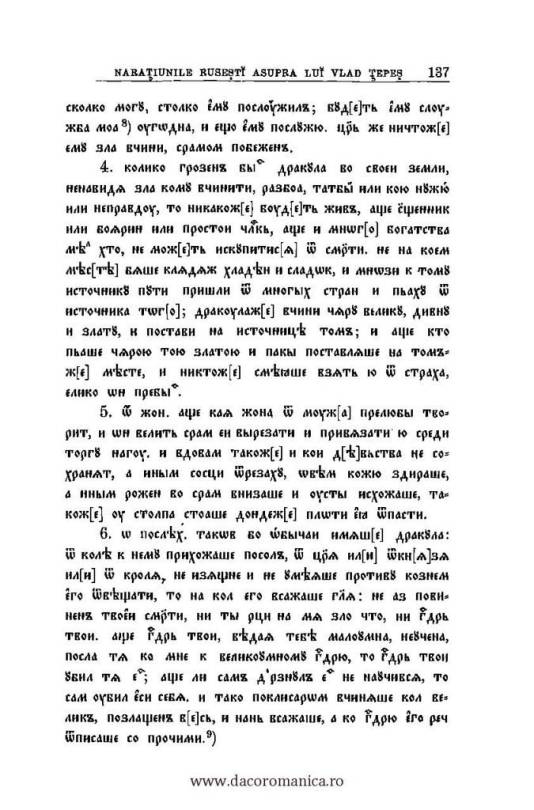
About the Slavic manuscripts. Version I.
Earlier we raised the topic of Slavonic manuscripts, but since we are talking about pamphlets, we will also put up all existing Slavonic manuscripts.
Let us repeat that there are 4 versions of the same text, extremely similar to the text of the German pamphlets.
1. The oldest version is considered to be the Kirill-Belozersky manuscript, now in the library of St. Petersburg, M. E. Saltykov-Shchedrin Library. A copy in the Kirillov Historical and Art Museum, no. 8779
2. Tikhonravovsky's version. Moscow , Lenin's library, from the collection of Tikhonravovsky (col. 299, no. 379).
3. Zabelinsky's version. State Historical Museum, Moscow , no. in the collection 451. A copy in St. Petersburg , the Salnikov-Schedelin State Library, St. Petersburg, Russia. Saltykov-Shchedrin, Titov's collection, no. 2796. And also in the collection of lovers of ancient literature under 3195, in the Archive of the geographical community of the USSR (if still exists, the book was written in 1974), State Library of Lenin, Moscow in the collection of archivist VM Undolsky (310), no. 632.
4. West Russian version in the State Historical Museum of Moscow, Brasov collection, no. 604.
All the manuscripts are similar in general, as they all have the same source. One manuscript is unfinished, another slightly altered. Their author and exact date are unknown. There is speculation, with Florescu, that it is a work from Transylvania, as the Slavic language in Transylvania was also relevant to the writing. However, the word "Mutian" used points to the possibility of Moldavian authorship or Russian. The Romanians themselves called themselves in documents as Wallachians, Wallachia, Ugroovlakhia, also did Transylvania. But in the Moldavian chronicles just more often used a different vocabulary - Muntenia (the first time this word exactly and occurs in the Moldovan rulers). With the Wallachians themselves in the documents of the 15-16th century such specification can be found very rarely, almost impossible. Moreover, the language of the first text does not look like the Slavic language used in the 15-16th centuries in Transylvania and Wallachia, but looks more like Moldavian Slavic, which was significantly different from Wallachian.
So, the versions presented by the historian I. Bogdan in VLAD TEPES ŞI NARATIUNILE GERMANE ŞI RUSEŞTI ASUPRA LUI (1896).
The edition itself is in Romanian, but it contains 3 versions of the manuscript in the original Slavonic as well as one version from a German story that presumably became the basis for the Slavonic manuscripts.
So, the first version of the Slavonic text.
_________
RU:
О славянских манускриптах. Версия I.
Ранее мы поднимали тему о славянских манускриптах , но раз зашла речь о памфлетах, мы выложим и все существующие славянские манускрипты.
Повторим, что существует 4 версии одного и того же текста, крайне похожего на текст немецких памфлетов.
1. Самой старой версией считается Кирилло-Белозерский манускрипт, сейчас в библиотеке Санкт-Петербурга, библиотека им. М. Е. Салтыкова-Щедрина. Копия в Кирилловском историко-художественном музее, № 8779
2. Версия Тихонравовского. Москва , Ленинская библиотека, из коллекции Тихонравовского (кол. 299, № 379)
3. Версия Забелинского. Государственный исторический музей, Москва, № в коллекции 451. Копия в Санкт-Петербурге , государственной библиотеке им. Салтыкова-Щедрина, коллекция Титова № 2796. А также в коллекции любителей древней литературы под 3195, в Архиве географического сообщества СССР (если еще такое есть, книга писалась в 1974), Государственно библиотеке Ленина, Москве в коллекции архивиста В.М. Ундольского (310), № 632.
4. Западно-русская версия в государственном историческом музее Москвы, коллекция Брашова, под № 604.
Все манускрипты схожи в целом, поскольку имеют основой один и тот же источник. Один манускрипт не дописан, другой несколько изменен. Автора их и точной даты неизвестно. Есть предположения, у Флореску, что это работа из Трансильвании, поскольку славянский в Трансильвании также был актуален для письма. Однако, использованное слово "Мутьянском" указывает на возможность молдавского авторства или русского. Сами румыны себя называли в документах - валахи, Валахия, Угровлахия, также делала Трансильвания. А вот в молдавских хрониках как раз таки чаще используется иная лексика -Мунтения (впервые это слово как раз таки и встречается у молдавских господарей) . У самих валахов в документах 15 -16 века такую конкретизацию встретить можно крайне редко, почти невозможно. Более того, язык первого текста не похож на славянский, использовавшийся в 15-16 веке в Трансильвании и Валахии, но похож скорее на молдавский славянский, который знатно отличался от валашского.
Итак, версии , представленные историком И. Богданом в работе VLAD TEPES ŞI NARATIUNILE GERMANE ŞI RUSEŞTI ASUPRA LUI (1896).
Издание само на румынском, но в нем представлены 3 версии манускрипта на славянском в оригинале , а также одна версия из немецкого рассказа, предположительно, ставшего основой для славянских манускриптов.
Итак, первая версия славянского текста
8 notes
·
View notes
Text
Slasher OC: Nadia Nikolina Chirilă

Full Name: Nadia Nikolina Chirilă
Nickname(s): Nadia, Niko, White Diamond Eyes
Age: 38
Gender: Female
Nationality: Romanian
Place of Birth: Bucharest, Romania
Current Location: Greenland or Scottland, depending on how she feels
Occupation: Former Forced Prostitute; Now Hitwoman and Artist
Languages: Romanian, English, Greenlandic, Danish, Chinese
Appearance:
Height: 6'1
Weight: 182 lbs
Body Type: Hourglass figure, thicker joints, muscular arms and legs, muscular chest and shoulders, rounded buttocks; a thick muscular woman that gives you the impression of a female Amazonian warrior
Skin Color: Warm Beige
Hair Color: Dark Brown
Hair Style: Long to her middle waist and wavy; giving her a wide appearance
Eye Color: Like her two brothers Decebal and Alexander, she has pale grey, almost white, giving the impression she is blind
Clothing: As a civilian she wears practical clothing for the weather in Greenland, opting for thick coats with hoods in colors of wine red, black, dark brown. She goes with simple dark thick pants and winter boots, the colors being dark ones. If she stays inside her home, she opts for comfortable clothing, knitted sweaters, and warm thighs. As a hitwoman, she dresses in full black clothing to hide her identity completely.

Other features: She has tattoos going up from between the valley of her breasts to her collarbones and covering her neck.
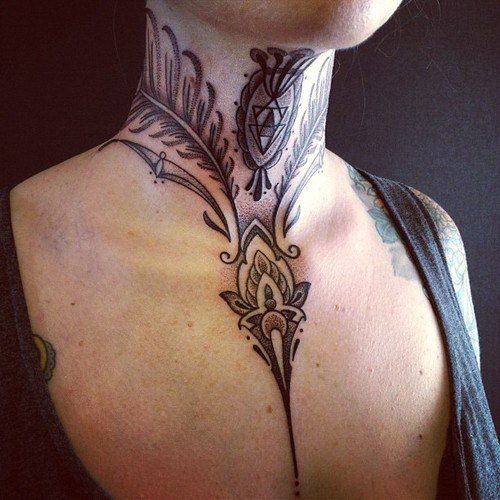
Weapons: Kusarigama, Throwing Knives, and Mace Bludgeon
Power/Skills:
Murderous expertise
Brute strength
Stealth
Skilled usage of weaponry
Skill in hand-to-hand combat
Martial Arts
Knifesmanship
Kusarigamajutsu
Fearlessness
Marksmanship
Artistic expertise in painting and origami
History/Bio:
Nadia Nikolina Chirilă was born in Romania, being the younger sister to Decebal and Alexander, the three of them being triplets by birth. She was the younger daughter to Apostol Chirilă, and her mother, Maria Stratulat of Moldovic heritage. She was born 12 minutes after Alexander, and because the parents couldn't support all three children, they passed Alexander and Nadia to an orphanage only to be sold over the country boundaries for human trafficking.
Before Alexander could be bought for organ trafficking in America, an old lady took him in, leaving Nadia all alone, only to be taken by an Italian Mafia Leader, Romero Gonzales because of her unique eyes, raising her until the age of 10, when she was forced to work into the prostitution by her father figure, losing her virginity at that fragile age and abused both mentally and sexually by countless men; being caged like an animal and labeled as nothing more than an object.
By the age of 15, a customer came in a Chinese man, who pitied Nadia and helped her escape. The said man took her to America, Ohio where he was living with his American wife who couldn't have children; the man being a former assassin from China.
Nadia observed how in his free time her new father figure practiced martial arts and asked him to train her, finding out more about what he did in his past, she simply asked him to teach her how to kill. Until the age of 27, she spent her time in America, Ohio with her adoptive parents, learning, and training, until they passed away.
Not seeing any reason to stay there, Nadia flew to a more secluded place in Greenland, starting a job as an independent artist in painting and the art of origami which her Chinese adoptive father taught her, and also taking jobs as a hitwoman. She also has a cabin for vacations in Scottland where she sometimes stays.
Her style of killing:
Despite being a ruthless killer, she mostly kills men, being a meister into weaponry, her preferable killing method is piercing under the chin of her victims with the sickle blade of her kusarigama or simply smashing the throats with her mace bludgeon. Despite being a woman she possesses strength that can match that of men, killing men that abuse women.
Personality:
Nadia is the type of woman that is the epitome of a male into a female's body. She sports a hardcore personality that screams 'she is not one to be messed it'. The type of woman that plays with big boys like they are nothing but kids.
She is a manly woman with a spirit of a warrior, giving off big sister vibes, despite being the younger Chirila sibling. In her day-to-day life, she is a hard-working woman who isn't afraid to get dirty or bruised, always open to competing against men who underestimate her and prove them wrong.
Nadia hates the stereotype of 'woman should be housewives and stay home', always open up to compete even with herself. When she traveled to Scottland one time she competed with the men in 'caber toss' and won 2nd place, proving that women can do what men do.
She is a true feminist, but with a more quiet demeanor.
She has a deep hatred towards men, because of her past abusers, she views men as only takers, destroying the beauty which the women exhibit. Towards women, especially petite ones, she is very soft and gentle, very polite, and acting as a big sister.
Despite her seeming calm and stoic attitude, she also has a very VERY bad temper that combusts into the presence of men, especially misogynist ones that act like peacocks with their masculinity.
Her favorite drink: Whiskey
Her favorite food: Moldavian Stew
Other Characteristics:
Despite her very tomboyish attitude, she also shows her feminity through arts and crafts in her paintings and origami sculptures, and such.
Like her brother, Decebal, her tolerance for alcohol is very big, being half Moldovian.
She is a smoker like her two other brothers, Decebal and Alexander.
Her voice holds a powerful timber, still feminine, but with a certain deepness, booming like she just threw a fist at a table.
Her scent is that of patchouli, tobacco with musky notes, hints of whiskey, and dark coffee.
#Nadia Nikolina Chirilă#Slasher OC#Decebal's Sister#Alexander's Sister#Romanian OC#Original characters#powerful woman#warrior woman#hitwoman#assassin
25 notes
·
View notes
Photo

Moldavian Interior, Rodolphe Bresdin, 1865, Cleveland Museum of Art: Prints
Size: Sheet: 29.4 x 22.5 cm (11 9/16 x 8 7/8 in.); Platemark: 19.9 x 12.3 cm (7 13/16 x 4 13/16 in.)
Medium: etching
https://clevelandart.org/art/1945.346
7 notes
·
View notes
Text

The Paleo-Moldavian period of the Do Epoch. 2006. Mixed media. 55 × 93 cm. Artist's studio. Mark Verlan
The Open Art
5 notes
·
View notes
Note
How about 12, 37, and 47?
12. Best cliff-hanger?
I can’t think of one, probably because of binge-watching. All I can think of is the big Moldavian wedding massacre on Dynasty in the ‘80s. We had to wait all summer to find out who survived.
37. Favourite series/saga/triology, etc.?
Evil Dead, Evil Dead 2, and Army of Darkness, (which had the delightful working title of Medieval Dead, which is why Ashe goes back in time). I also liked the Three Colours trilogy by Krystoff Kieslowski at the time those films were released, but I can’t remember a single thing about them now. (Just added those to my “to re-watch” list).
47. A preview/trailer of a movie you saw and thought “I HAVE to see that!”?
Wes Craven’s New Nightmare, in which Heather Langenkamp plays herself, making a new Elm Street movie, and Freddie comes into the real world to kill the actors and crew. Today it would be thought of as “meta” but it was part of the mid-90s’ Postmodern movement in arts and literature, which I was a fool for. When I first saw that trailer, I said, and I quote, “It’s so postmodern, it’s making me come!”

5 notes
·
View notes